The Impact of Integrated Aquifer Storage and Recovery and Brackish Water Reverse Osmosis (ASRRO) on a Coastal Groundwater System
Abstract
:1. Introduction
2. Methods
2.1. Study Area
2.2. Numerical Modelling of ASRRO Application
2.2.1. Modelling Local Impacts (Local Model Based on ASRRO Pilot)
2.2.2. Modelling of Regional Impact (Regional Model)
3. Results
3.1. Local Impacts of ASRRO and BWRO
3.1.1. Relative Concentration Changes and Concentration Profiles
3.1.2. Concentration of the Membrane Concentrate
3.2. Regional Impacts of Wide-Spread Implementation of ASRRO and BWRO
3.2.1. Regional Concentration Changes and Concentration Profiles
3.2.2. Concentration of the Membrane Concentrate
4. Discussion
4.1. Impact of ASRRO on the Groundwater System
4.1.1. Local Impacts on Groundwater Quality
Stratification of Freshwater-Saltwater by ASRRO
Relative Impact of ASRRO
Comparing the Impact of BWRO and ASRRO
4.1.2. Regional Impacts on Groundwater Quality
4.2. Implications of This Study for the Use of the Westland Groundwater System and Coastal Groundwater Systems Elsewhere
5. Conclusions
Acknowledgments
Author Contributions
Conflicts of Interest
Appendix A. Model Input Regional Model

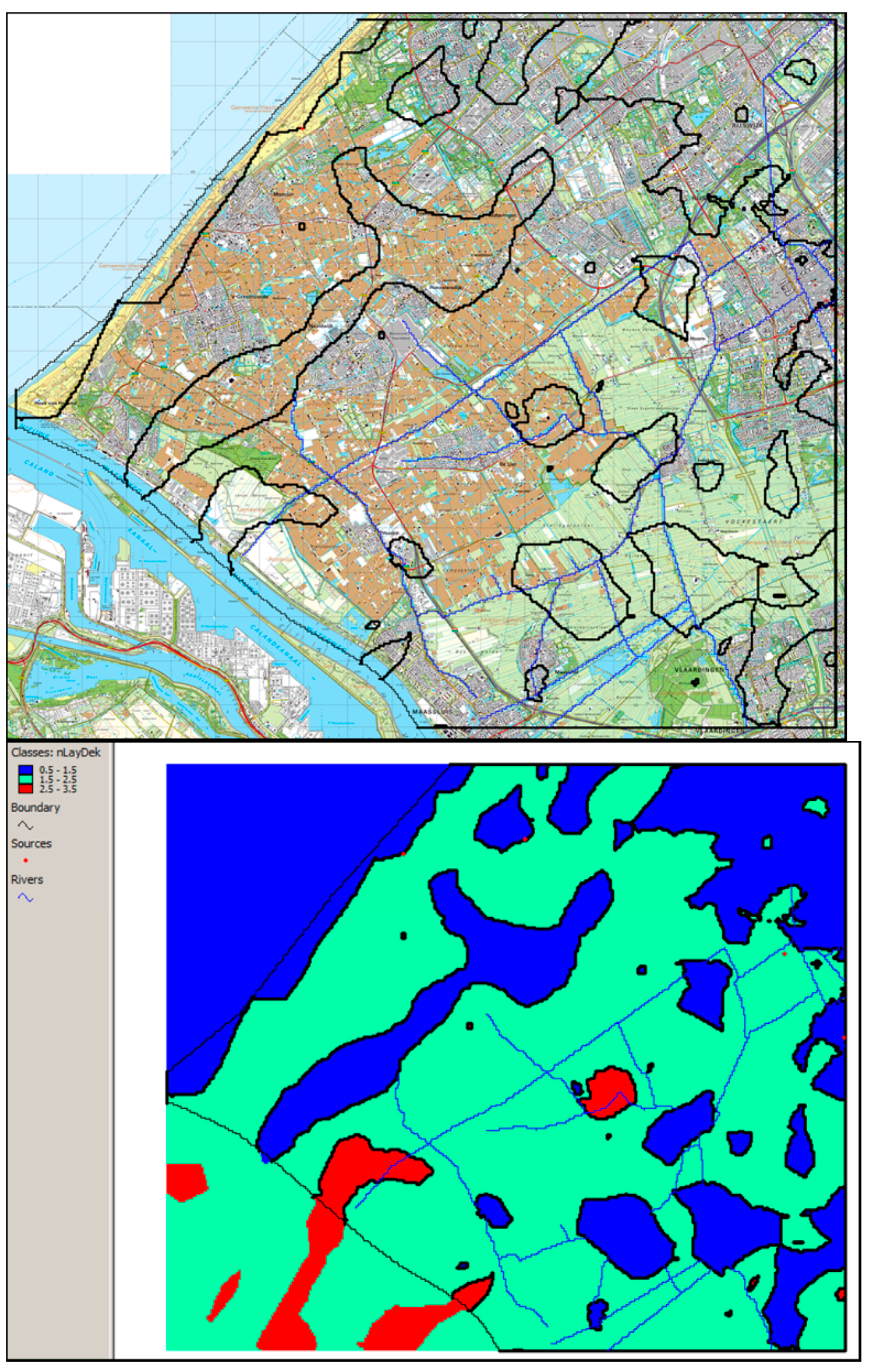
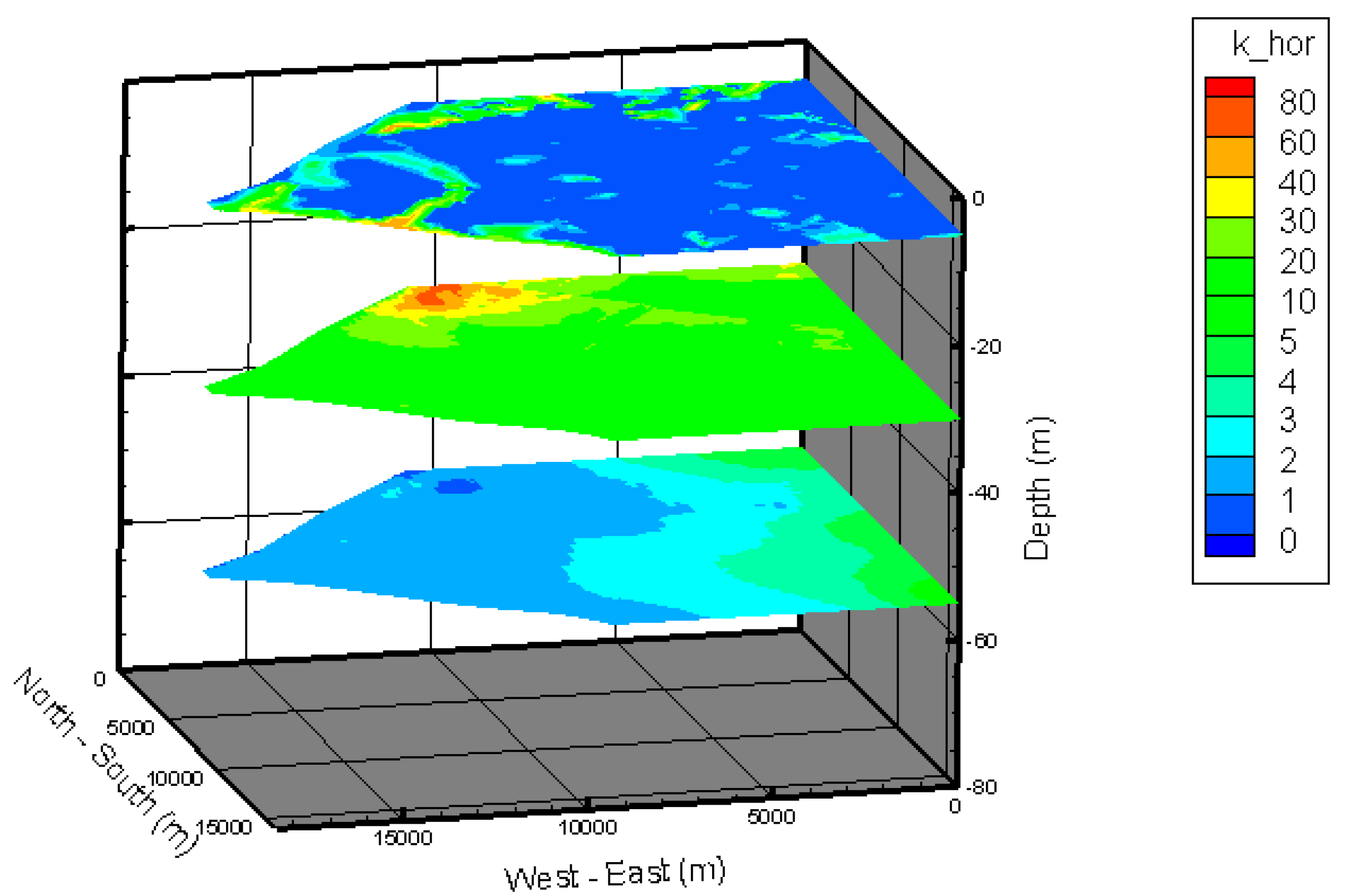
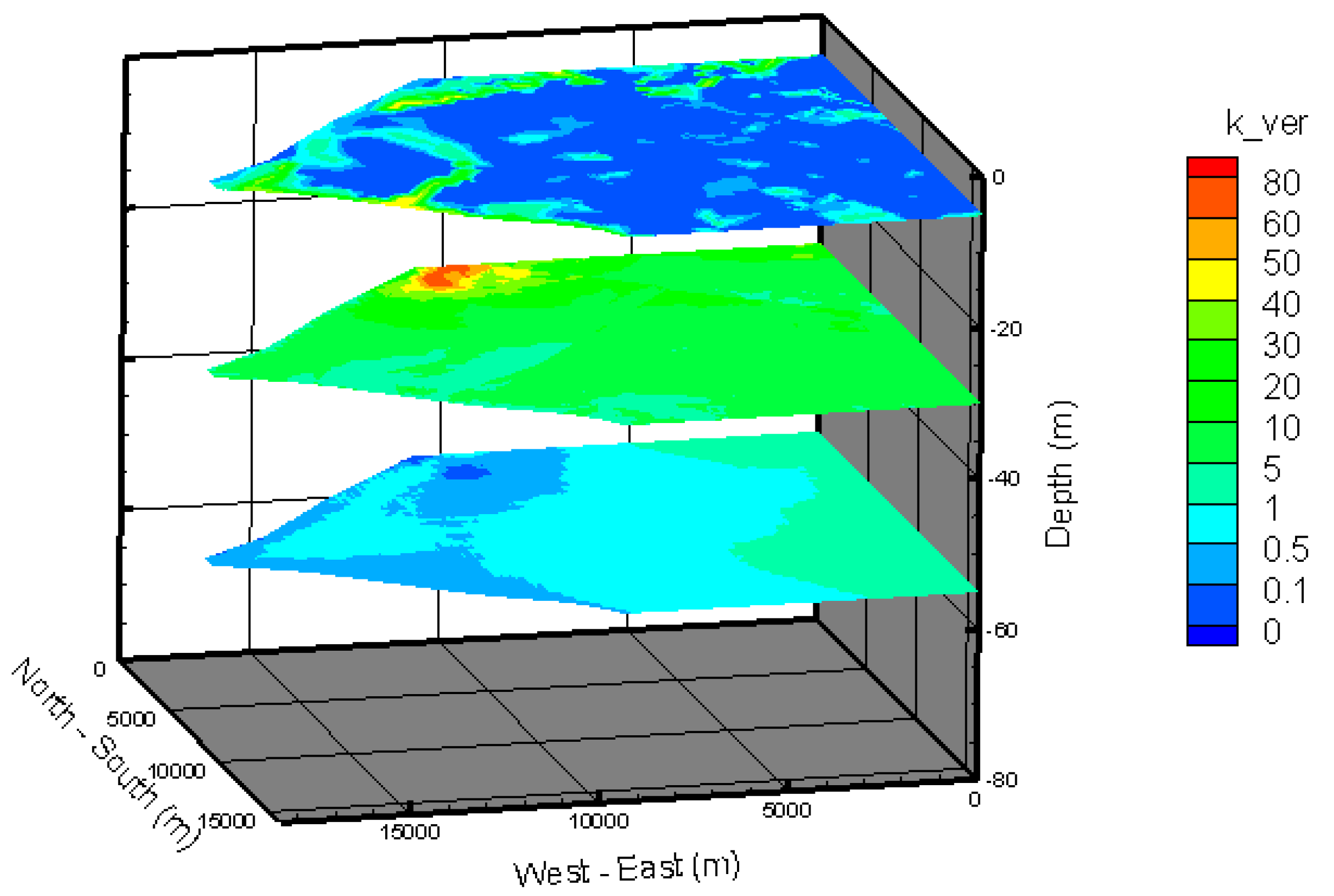
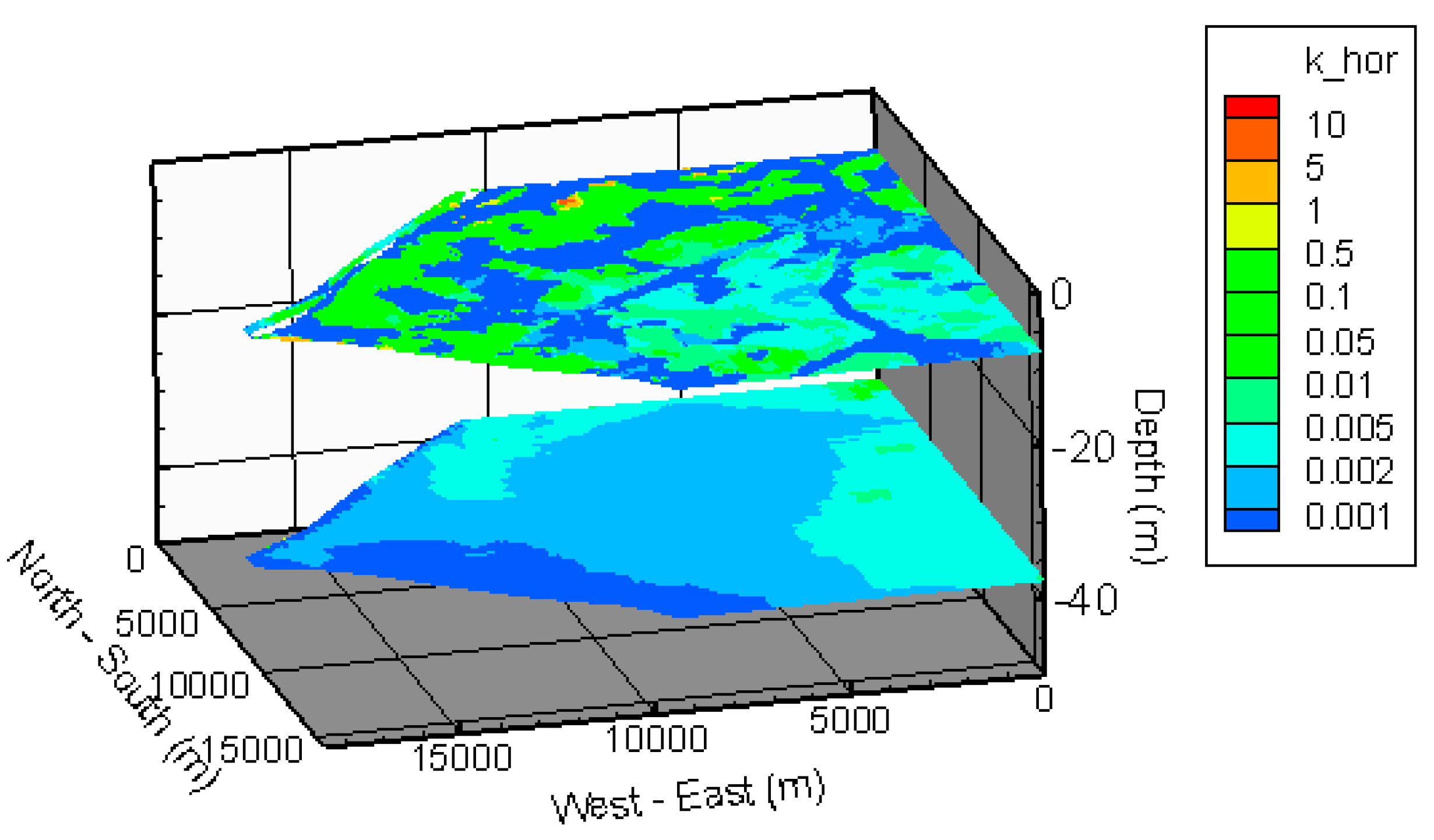
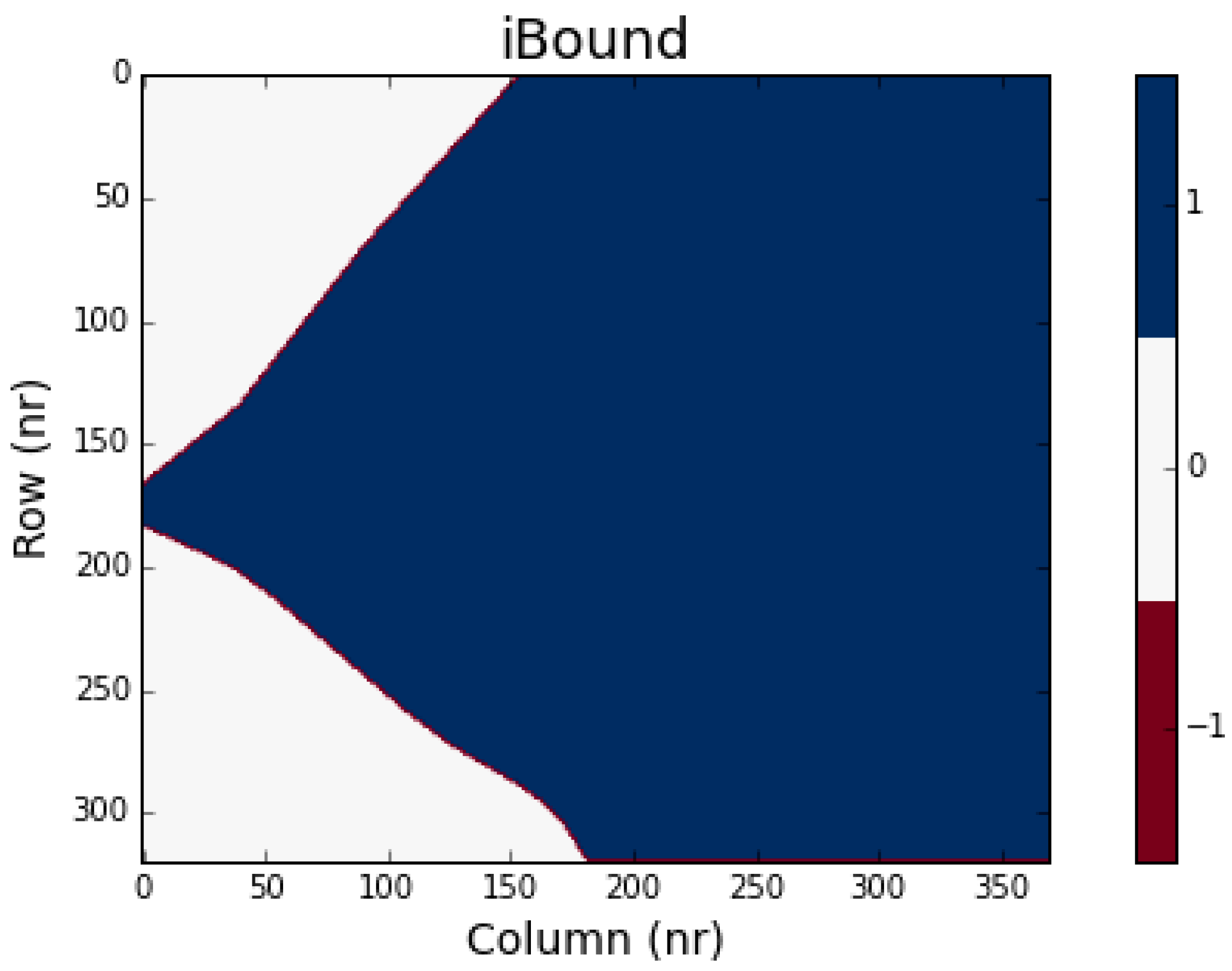
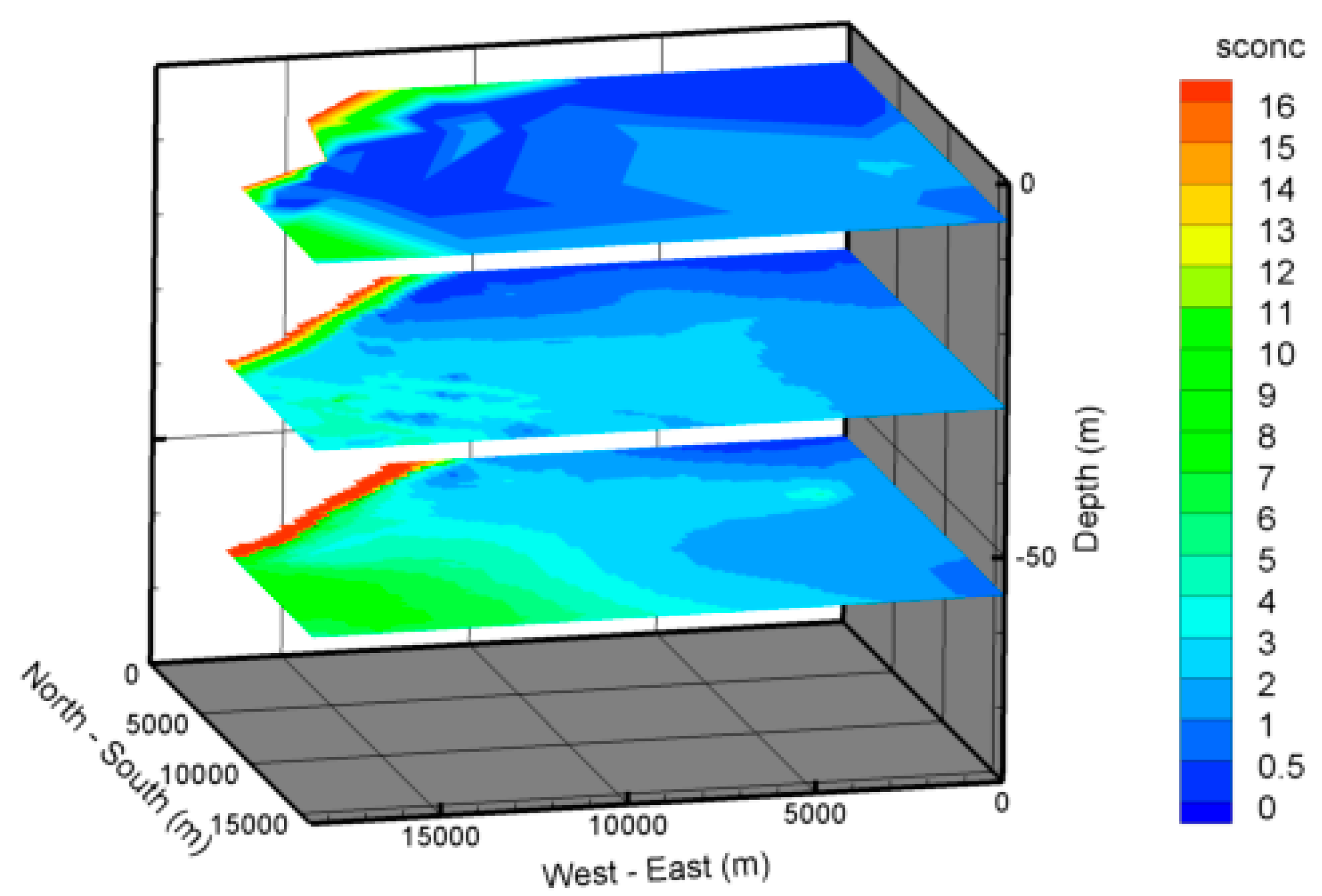

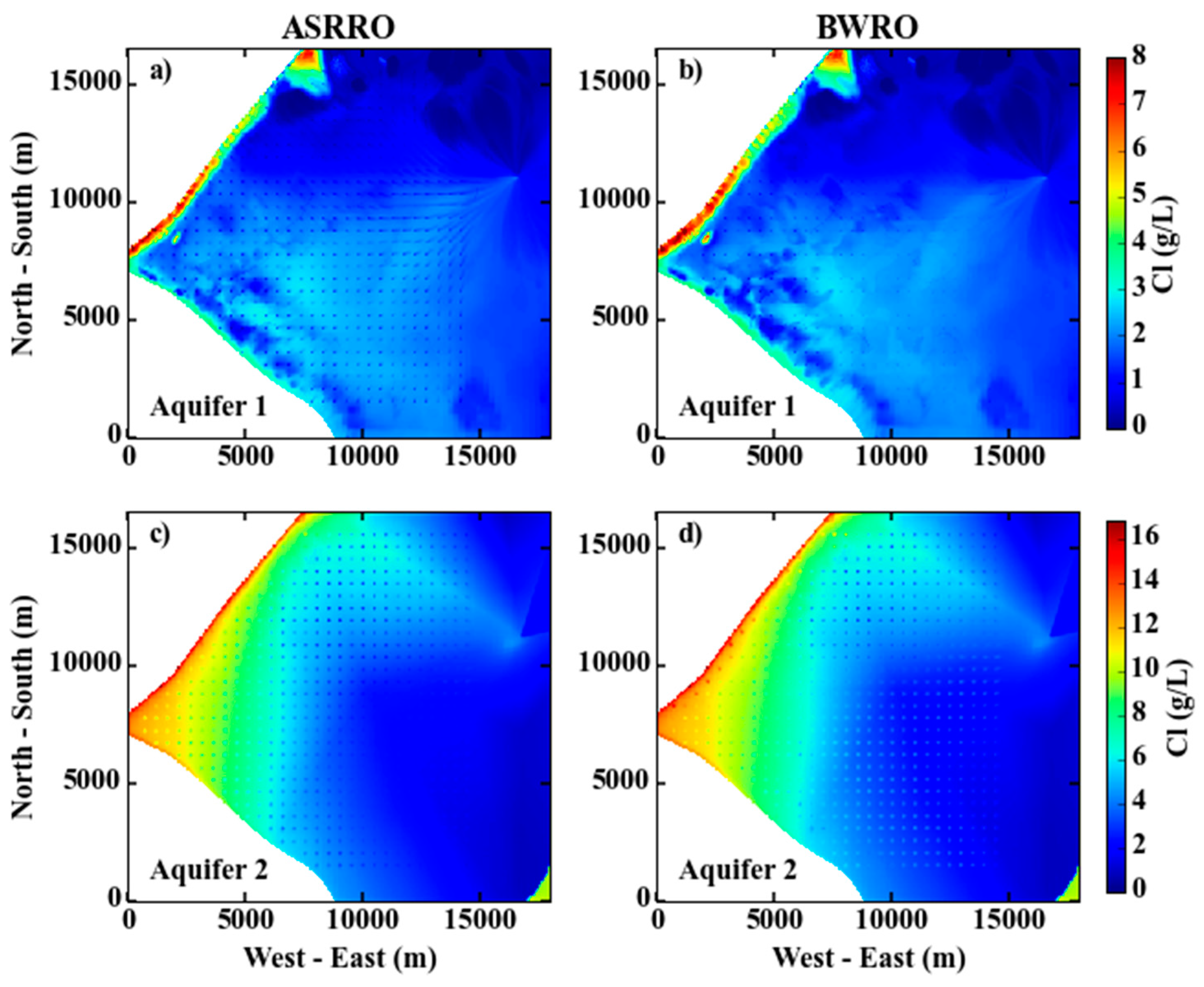
References
- Maliva, R.G.; Missimer, T.M. Aquifer Storage and Recovery and Managed Aquifer Recharge using wells: Planning, hydrogeology, design and operation. In Methods in Water Resources Evolution; Schlumberger: Houston, TX, USA, 2010; 578p. [Google Scholar]
- Pyne, R.D.G. Aquifer Storage Recovery: A guide to Groundwater Recharge through Wells; ASR Systems LLC: Gainesville, FL, USA, 2005; 608p. [Google Scholar]
- Stuyfzand, P.; Raat, K. Benefits and hurdles of using brackish groundwater as a drinking water source in the Netherlands. Hydrogeol. J. 2010, 18, 117–130. [Google Scholar] [CrossRef]
- Zuurbier, K.; Bakker, M.; Zaadnoordijk, W.; Stuyfzand, P. Identification of potential sites for aquifer storage and recovery (ASR) in coastal areas using ASR performance estimation methods. Hydrogeol. J. 2013, 21, 1373–1383. [Google Scholar] [CrossRef]
- Esmail, O.J.; Kimbler, O.K. Investigation of the technical feasibility of storing fresh water in saline aquifers. Water Resour. Res. 1967, 3, 683–695. [Google Scholar] [CrossRef]
- Merritt, M.L. Recovering Fresh Water Stored in Saline Limestone Aquifers. Ground Water 1986, 24, 516–529. [Google Scholar] [CrossRef]
- Ward, J.D.; Simmons, C.T.; Dillon, P.J.; Pavelic, P. Integrated assessment of lateral flow, density effects and dispersion in aquifer storage and recovery. J. Hydrol. 2009, 370, 83–99. [Google Scholar] [CrossRef]
- Van Ginkel, M.; Olsthoorn, T.N.; Bakker, M. A New Operational Paradigm for Small-Scale ASR in Saline Aquifers. Groundwater 2014, 52, 685–693. [Google Scholar] [CrossRef] [PubMed]
- Oosterhof, A.; Raat, K.J.; Wolthek, N. Reuse of salinized well fields for the production of drinking water by interception and desalination of brackish groundwater. In Proceedings of the 9th Conference on Water Reuse, Windhoek, Namibia, 27–31 October 2013; International Water Association (IWA): London, UK, 2013. [Google Scholar]
- Zuurbier, K.G.; Stuyfzand, P.J. Consequences and mitigation of saltwater intrusion induced by short-circuiting during aquifer storage and recovery (ASR) in a coastal subsurface. Hydrol. Earth Syst. Sci. Discuss. 2017, 21, 1173–1188. [Google Scholar] [CrossRef]
- Zuurbier, K.G.; Haas, K.; Huiting, H. Assessment Reversed Osmosis Membrane Clogging by Varying Redox Conditions of Feedwater; KWR Watercycle Research Institute: Nieuwegein, The Netherlands, 2016. [Google Scholar]
- Oude Essink, G.H.P.; van Baaren, E.S.; de Louw, P.G.B. Effects of climate change on coastal groundwater systems: A modeling study in the Netherlands. Water Resour. Res. 2010, 46, W00F04. [Google Scholar] [CrossRef]
- Zuurbier, K.G.; Zaadnoordijk, W.J.; Stuyfzand, P.J. How multiple partially penetrating wells improve the freshwater recovery of coastal aquifer storage and recovery (ASR) systems: A field and modeling study. J. Hydrol. 2014, 509, 430–441. [Google Scholar] [CrossRef]
- Langevin, C.D.; Thorne, D.T.; Dausman, A.M.; Sukop, M.C.; Guo, W. SEAWAT version 4: A computer program for simulation of multi-species solute and heat transport. In Techniques and Methods, Book 6; USGS, Ed.; Geological Survey (U.S.): Reston, VA, USA, 2007. [Google Scholar]
- Bakker, M. FloPy3. 2016. Available online: http://modflowpy.github.io/flopydoc/introduction.html (accessed on 30 October 2016).
- Appelo, C.A.J.; Postma, D. Geochemistry, Groundwater and Pollution, 2nd ed.; A.A. Balkema: Leiden, The Netherlands, 2005; 649p. [Google Scholar]
- Paalman, M. Enlarging Selfsufficient Horticultural Freshwater Supply: Greenhouse Areas Haaglanden (Part 1); KvK105/2013A; Knowledge for Climate: Utrecht, The Netherlands, 2012. (In Dutch) [Google Scholar]
- Faneca Sànchez, M.; Raat, K.J.; Klein, J.; Paalman, M.; Oude Essink, G. Effects of Concentrate Disposal on the Groundwater Quality and Functions in the Westland Area; KWR: Nieuwegein, The Netherlands, 2012; 70p. (In Dutch) [Google Scholar]
- Luyun, R.; Momii, K.; Nakagawa, K. Effects of Recharge Wells and Flow Barriers on Seawater Intrusion. Ground Water 2011, 49, 239–249. [Google Scholar] [CrossRef] [PubMed]
- Bakker, M. Radial Dupuit interface flow to assess the aquifer storage and recovery potential of saltwater aquifers. Hydrogeol. J. 2010, 18, 107–115. [Google Scholar] [CrossRef]
- Karagiannis, I.C.; Soldatos, P.G. Water desalination cost literature: Review and assessment. Desalination 2008, 223, 448–456. [Google Scholar] [CrossRef]
- Zhu, A.; Christofides, P.D.; Cohen, Y. Energy Consumption Optimization of Reverse Osmosis Membrane Water Desalination Subject to Feed Salinity Fluctuation. Ind. Eng. Chem. Res. 2009, 48, 9581–9589. [Google Scholar] [CrossRef]
- Werner, A.D.; Bakker, M.; Post, V.E.; Vandenbohede, A.; Lu, C.; Ataie-Ashtiani, B.; Barry, D.A. Seawater intrusion processes, investigation and management: Recent advances and future challenges. Adv. Water Resour. 2013, 51, 3–26. [Google Scholar] [CrossRef]
- The Groundwater Directive. Directive 2006/118/EC of the European Parliament and of the Council of 12 December 2006 on the Protection of Groundwater against Pollution and Deterioration; 2006/118/EC; European Commission: Brussels, Belgium, 27 December 2006. [Google Scholar]
- Dillon, P. Australian progress in managed aquifer recharge and the water banking frontier. Water J. Aust. Water Assoc. 2015, 42, 53–57. [Google Scholar]
- Brown, D.L.; Silvey, W.D. Artificial Recharge to a Freshwater-Sensitive Brackish-Water Sand Aquifer, Norfolk, Virginia; Geological Survey Professional Paper; U.S. Government Publishing Office: Washington, DC, USA, 1977; 53p.
- Konikow, L.F.; August, L.L.; Voss, C.I. Effects of Clay Dispersion on Aquifer Storage and Recovery in Coastal Aquifers. Trans. Porous Media 2001, 43, 45–64. [Google Scholar] [CrossRef]
- Jonsson, G.; Macedonio, F.; Enrico, D.; Lidietta, G. Fundamentals in Reverse Osmosis. In Comprehensive Membrane Science and Engineering; Elsevier: Oxford, UK, 2010; pp. 1–22. [Google Scholar]
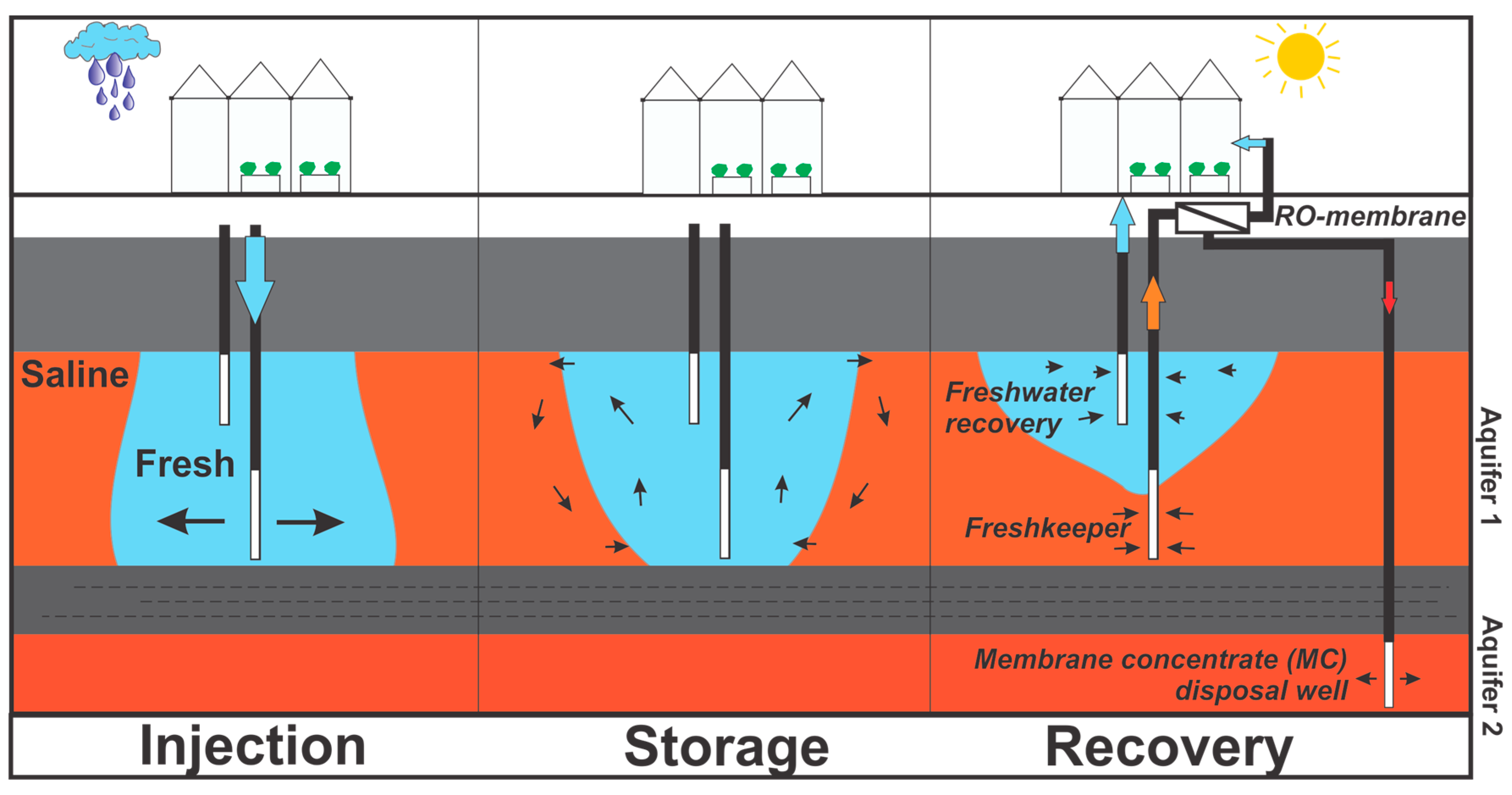
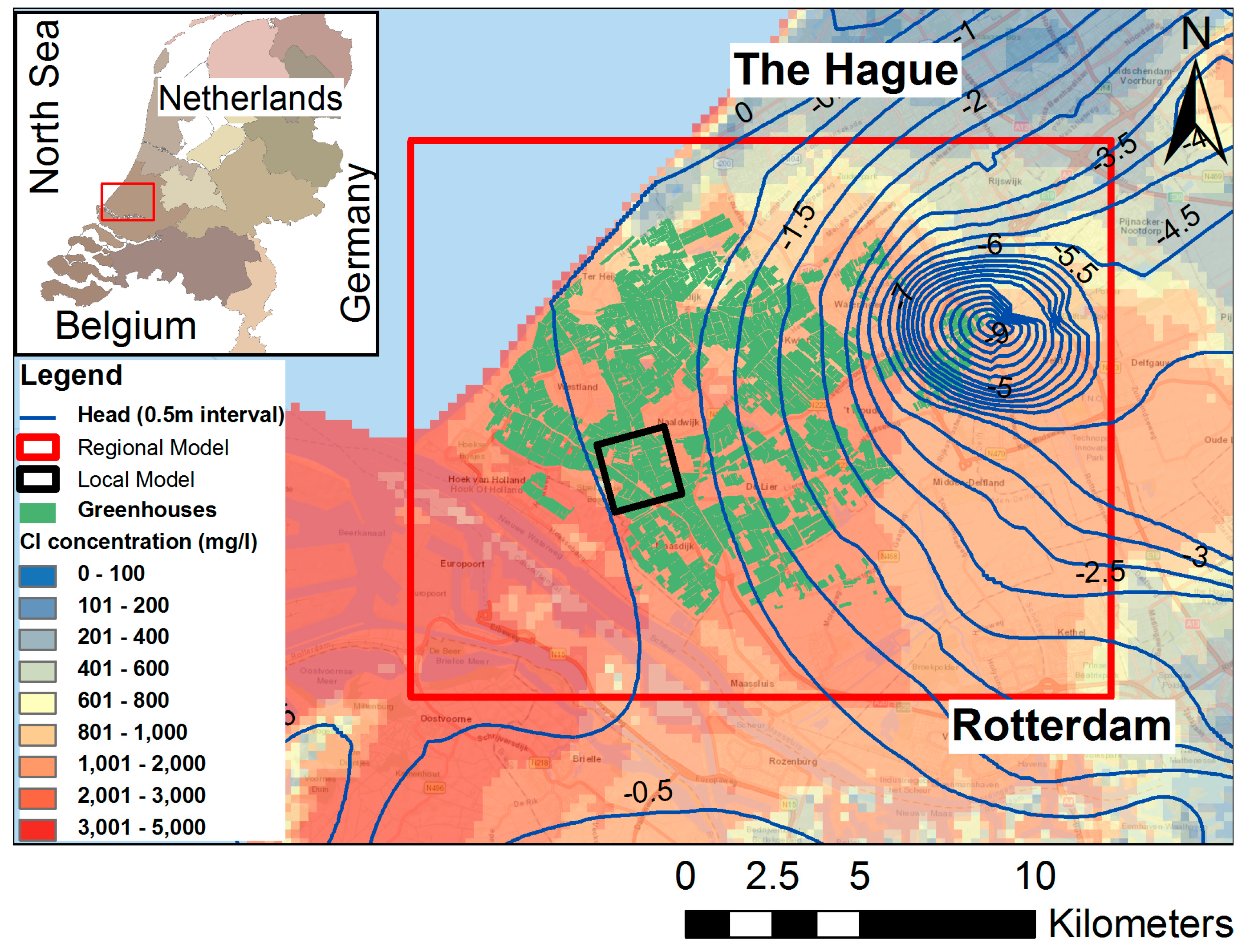
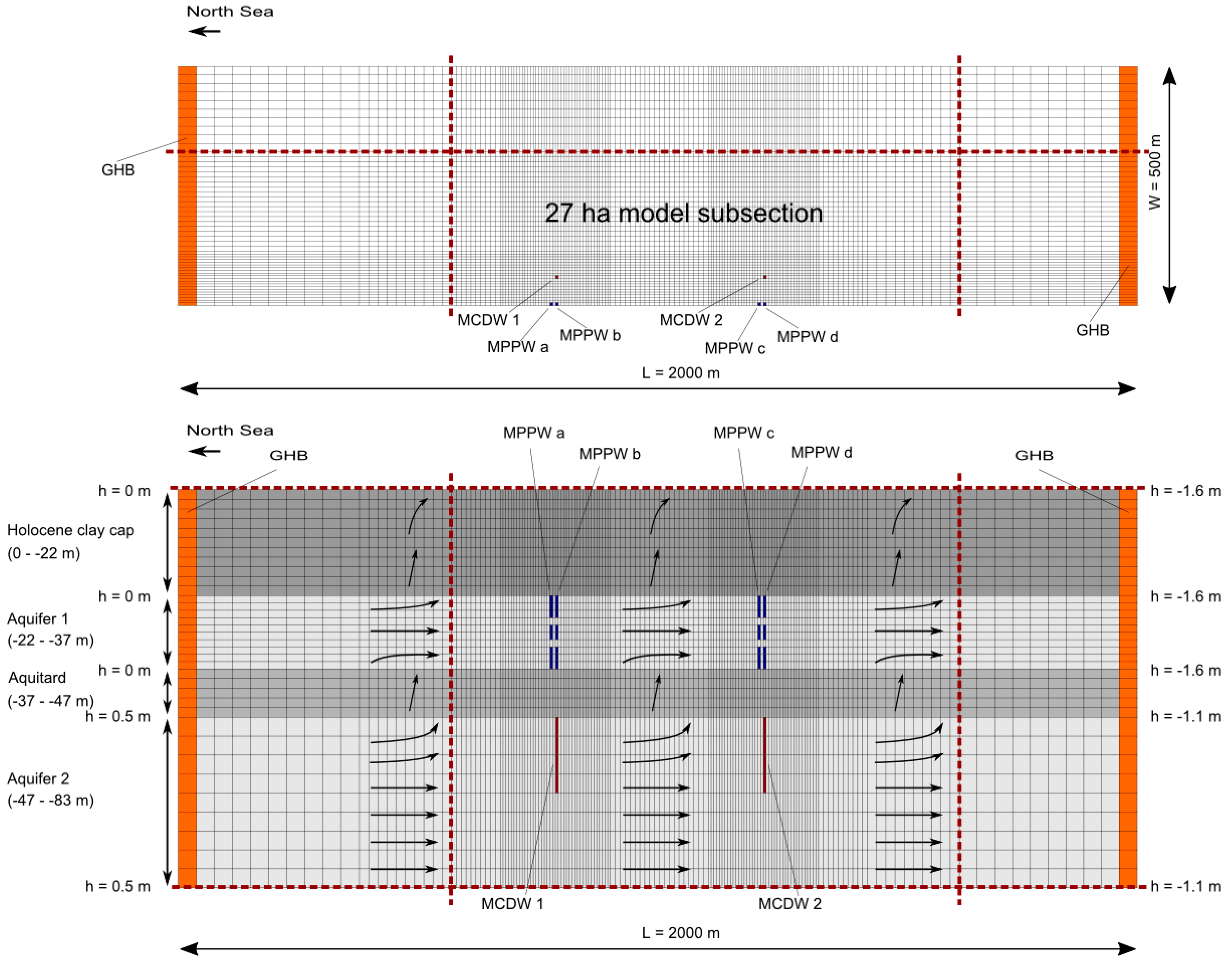
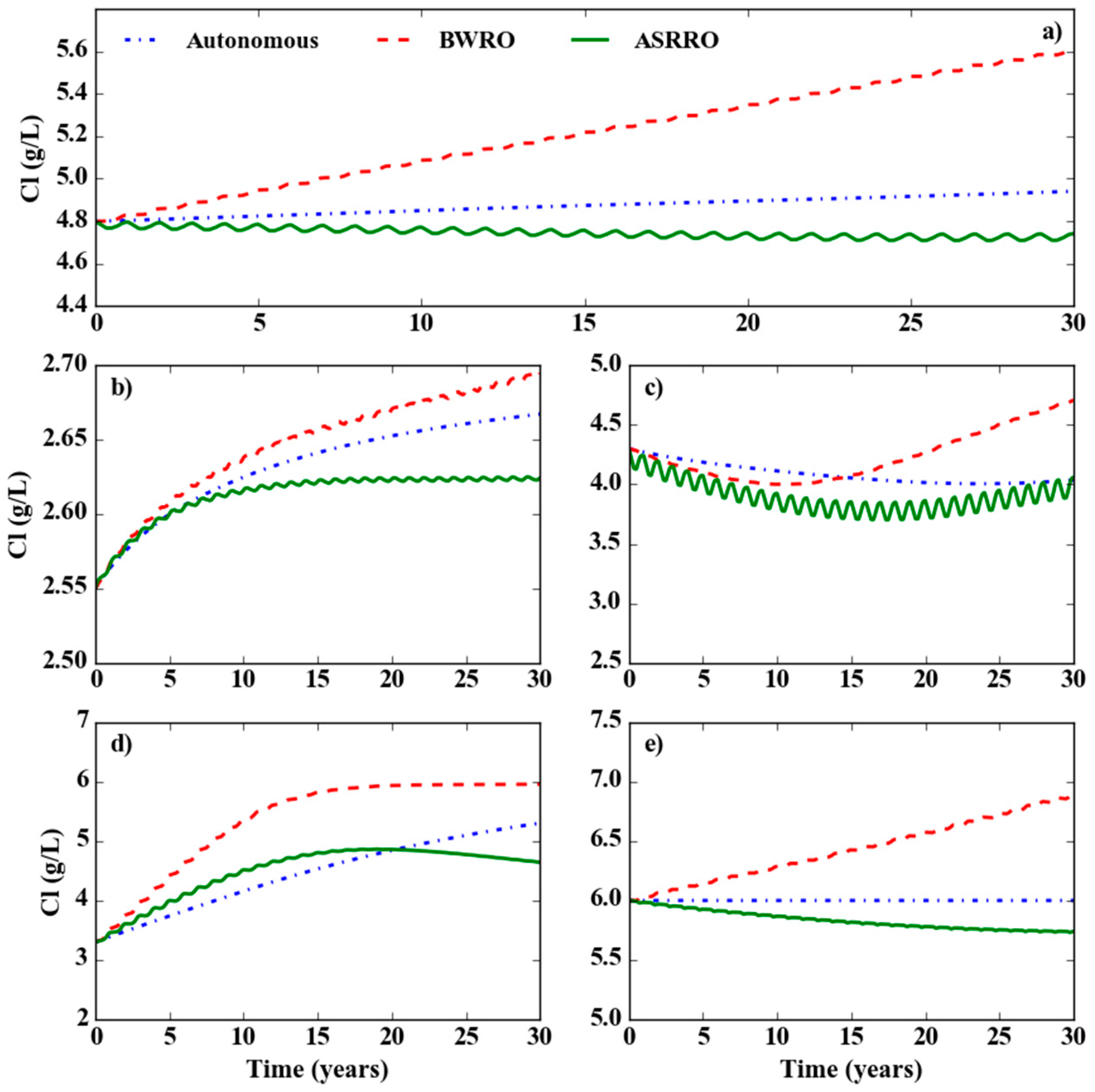

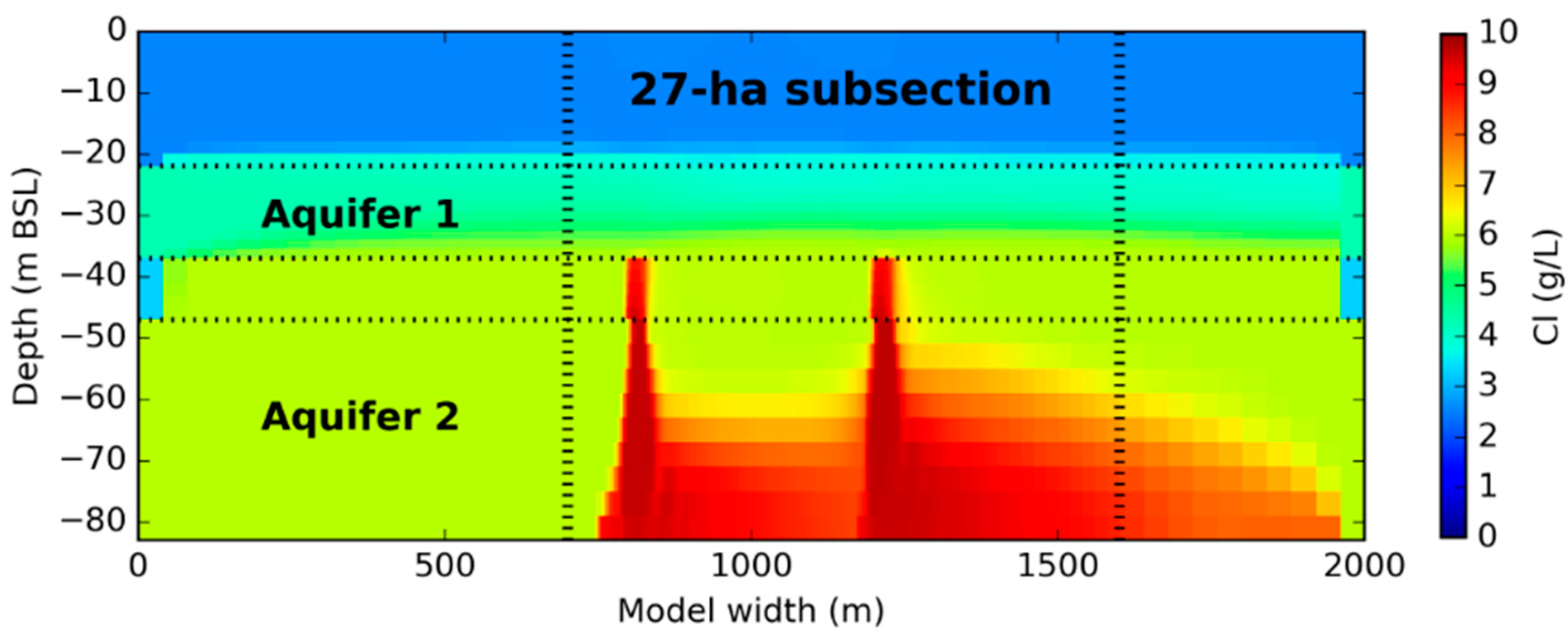

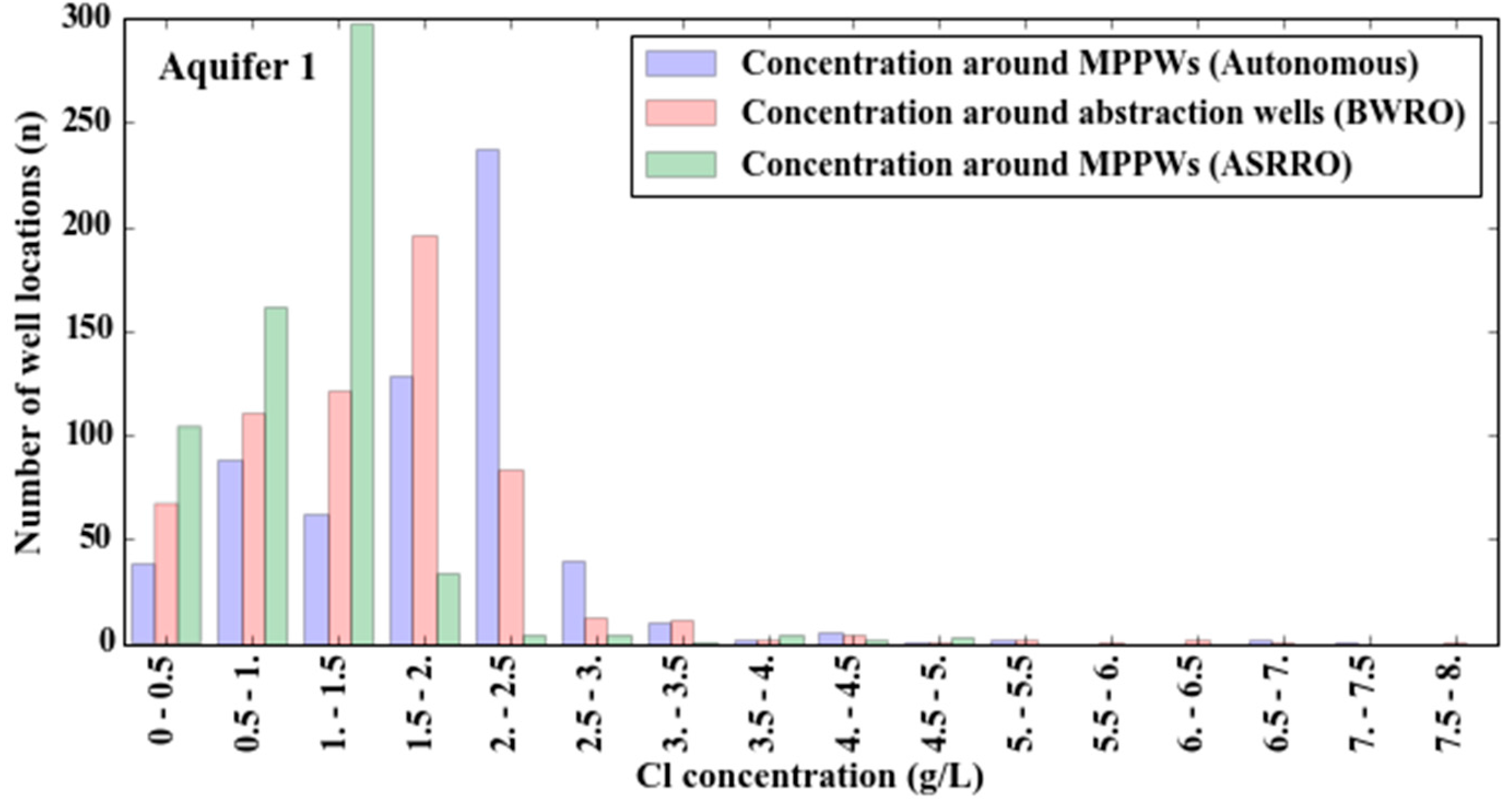
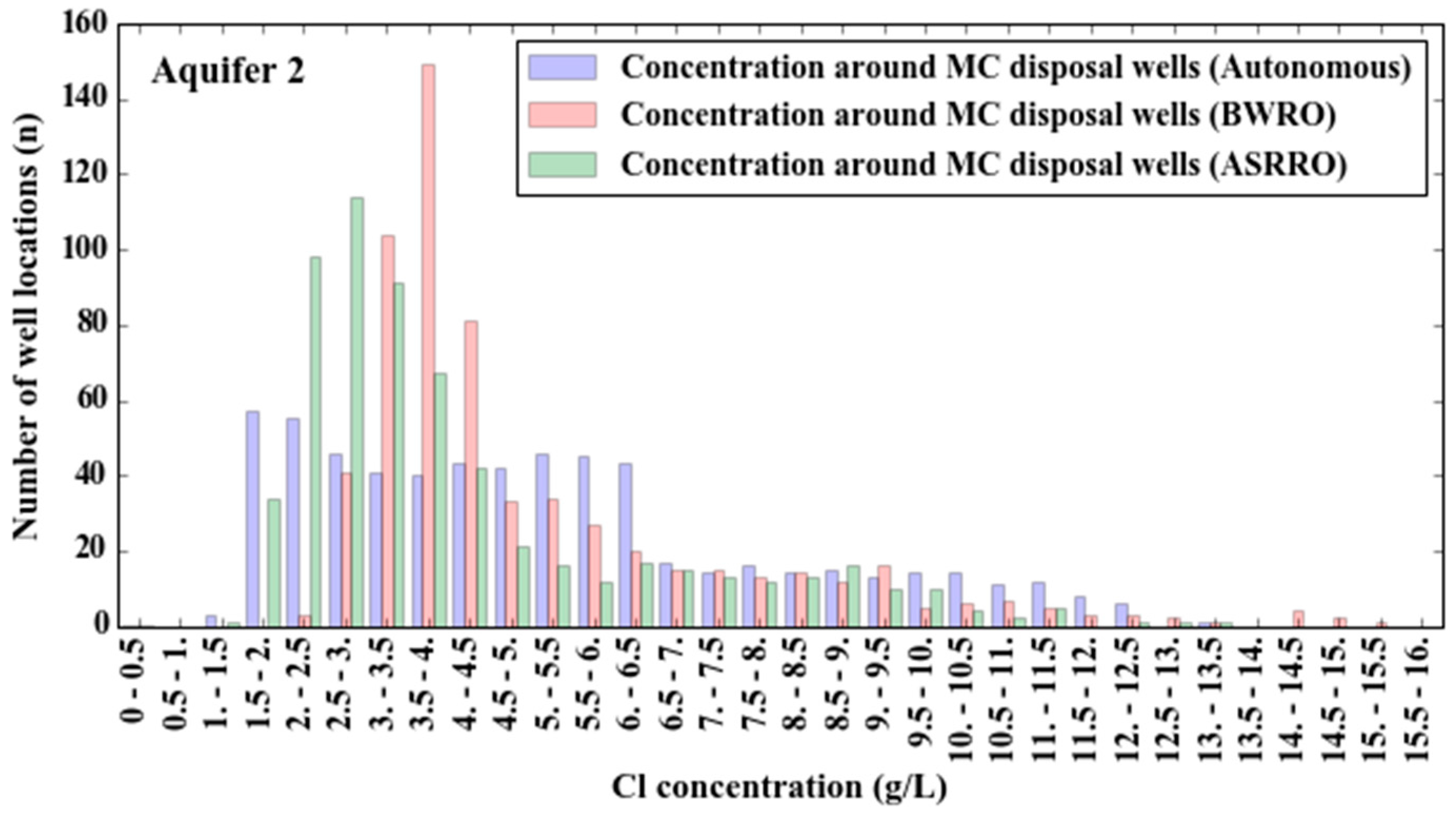
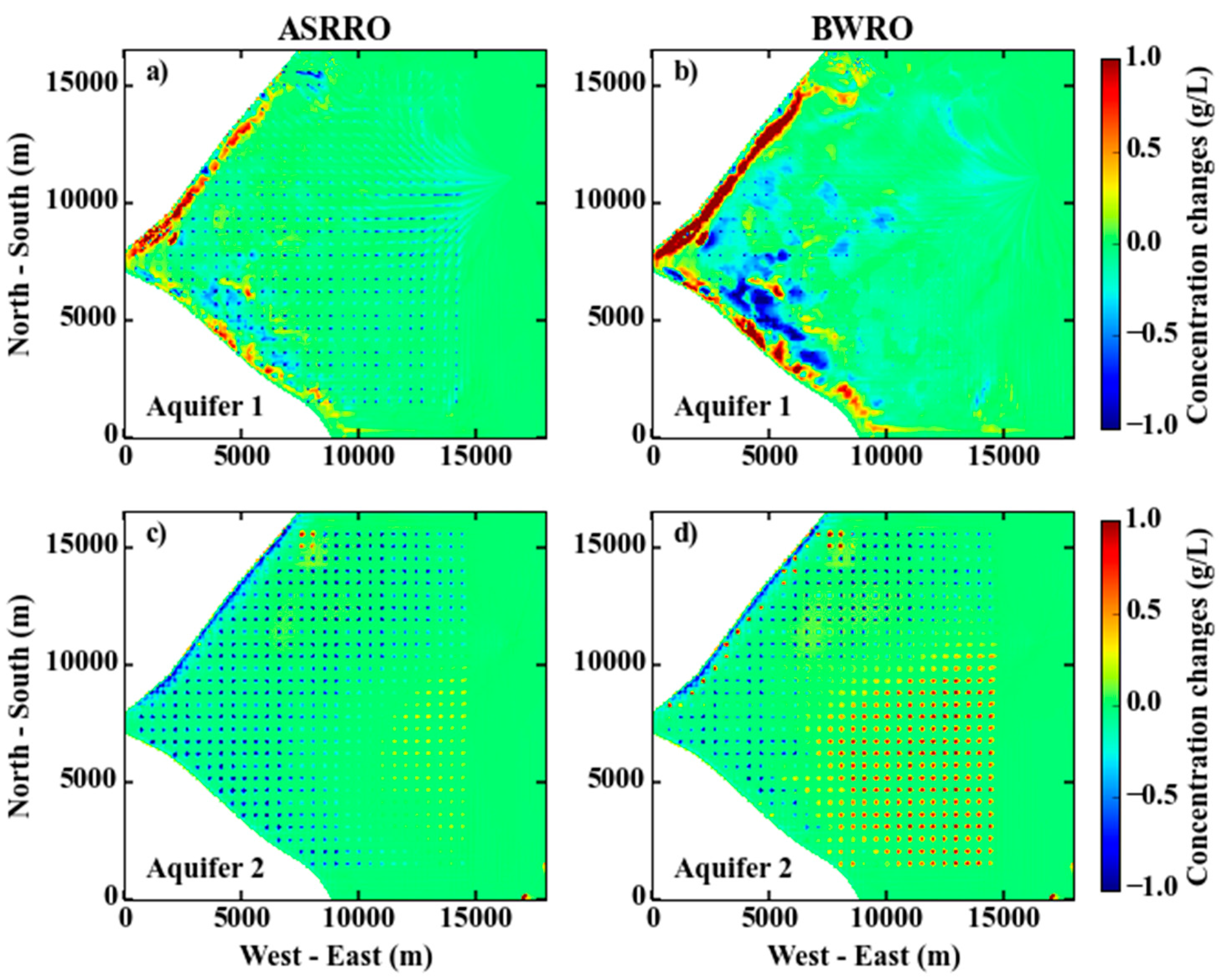
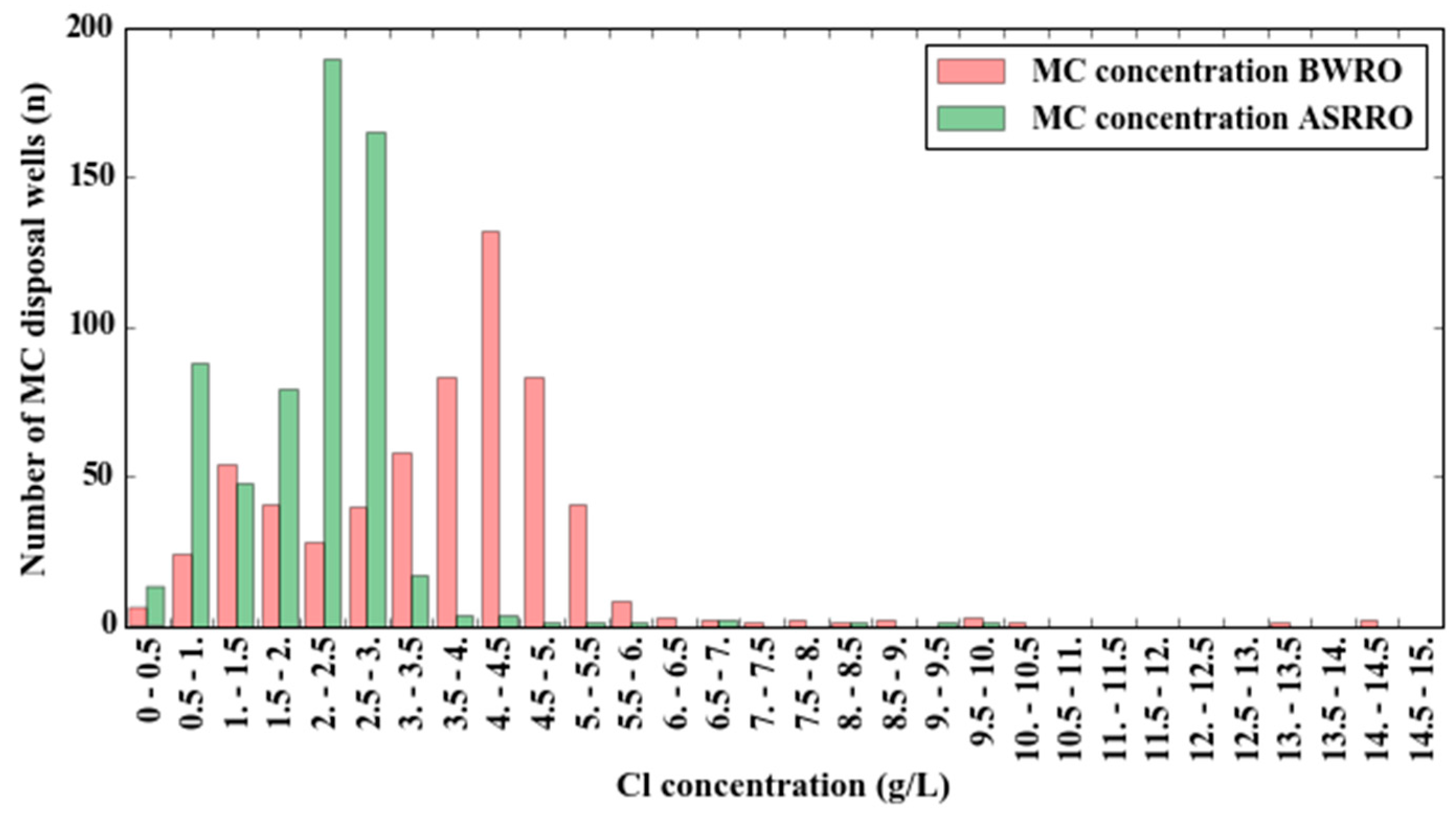
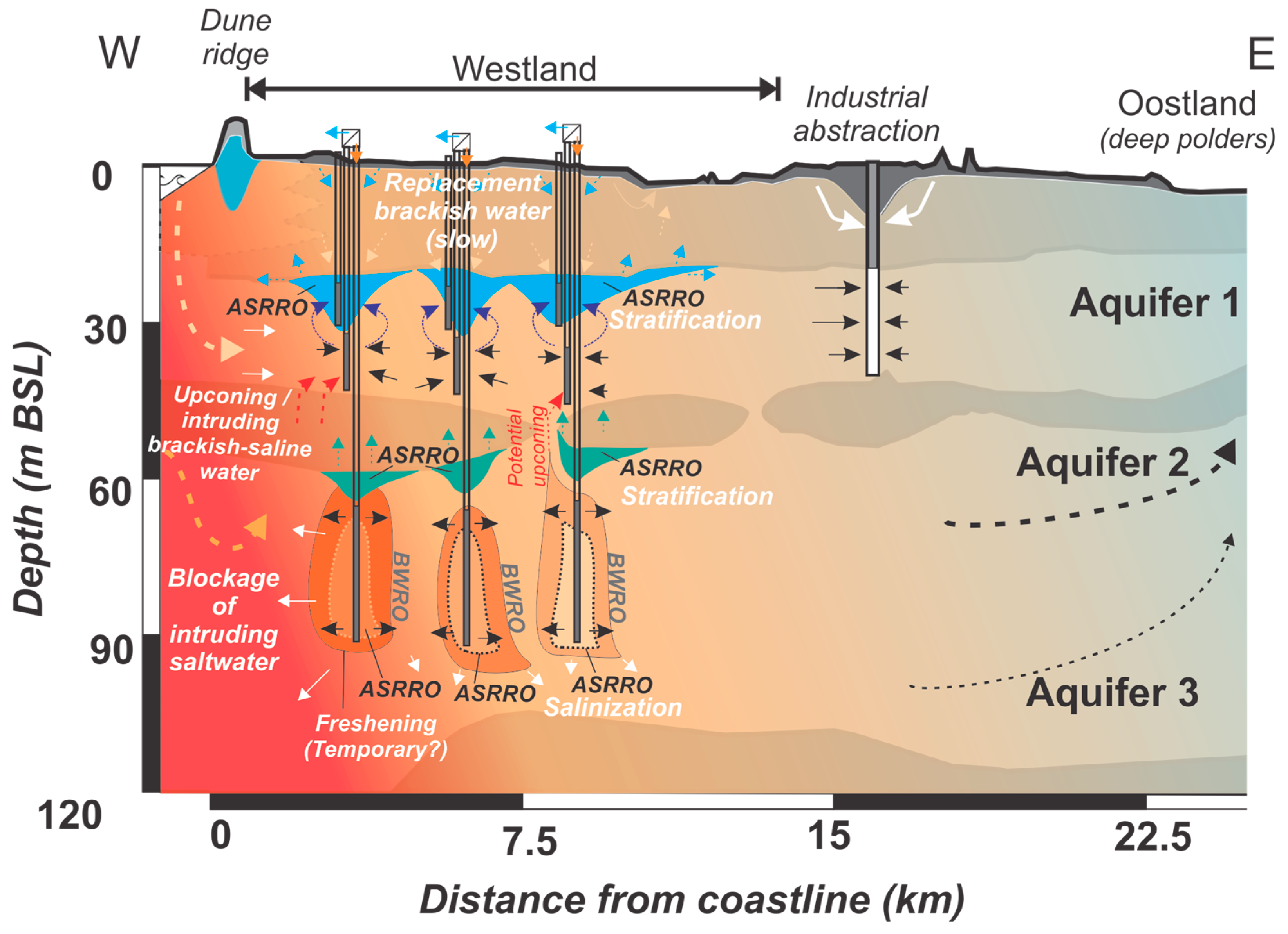
| Geological Layer | Depth | Layers | Porosity, n | K (Horizontal)/K (Vertical) | Storativity, S | Starting Conc |
|---|---|---|---|---|---|---|
| (m BSL) | (Thickness) | (-) | (m/day) | (-) | Cl (mg/L) | |
| Holocene clay cap | 0–22 | 11 (2 m) | 0.2 | 0.1/0.01 | 0.001 | 2550 |
| Aquifer 1 | 22–37 | 10 (1.5 m) | 0.3 | 35.0/35.0 | 1 × 10−6 | 4300 |
| Aquitard 1 | 37–47 | 5 (2 m) | 0.2 | 0.2/0.02 | 0.001 | 3300 |
| Aquifer 2 | 47–83 | 9 (4 m) | 0.35 | 30.0/30.0 | 1 × 10−6 | 6000 |
| BWRO | Time | Volume | Rate | ASRRO | Time | Volume | Rate |
|---|---|---|---|---|---|---|---|
| (Days) | (m3) | (m3/Day) | (dAys) | (m3) | (m3/Day) | ||
| Idle period | 182 | 0 | 0 | Winter injection | 123 | 13,500 | 109.8 |
| Storage period | 59 | 0 | 0 | ||||
| Summer abstraction | 153 | −13,500 | −88.2 | Summer abstraction | 153 | −13,500 | −88.2 |
| Idle period | 30 | 0 | 0 | Idle period | 30 | 0 | 0 |
| Geological Layer | Depth | Layers | Porosity, n | K (Horizontal) | Storativity, S |
|---|---|---|---|---|---|
| (m BSL) | (Thickness) | (-) | (m/Day) | (-) | |
| Phreatic | 0–5 | L1 (5 m) | 0.3 | 0.25–75 | 0.1 |
| Holocene clay cap | 5–20 * | L2–4 (5 m) | 0.3 | <1 | 0.001 |
| Aquifer 1 | 10–35 * | L3–7 (5 m) | 0.3 | 9–75 | 0.001 |
| Aquitard 1 | 35–40 | L8 (5 m) | 0.3 | 0–0.01 | 0.001 |
| Aquifer 2 | 40–135 | L9–10 (5 m), 11–13 (10 m), 14 (var) | 0.3 | 1–5 | 0.001 |
| Aquitard 2 | 100–154 | L15 (var) | 0.3 | 0.001–0.002 | 0.001 |
| Aquifer 3 | 114–272 | L16–17 (var) | 0.3 | 0.1–1 | 0.001 |
| Geological | Autonomous | ASRRO | Rel. Conc | BWRO | Rel. Conc | Rel. Conc Change ASRRO |
|---|---|---|---|---|---|---|
| Layer | Concentration | Concentration | Change ASRRO | Concentration | Change BWRO | Compared to BWRO |
| (g/L) | (g/L) | (%) | (g/L) | (%) | (%) | |
| Clay cap | 2.67 | 2.63 | −1.5 | 2.70 | +1.2 | −2.7 |
| Aquifer 1 | 3.91 | 3.97 | +1.4 | 4.71 | +20.3 | −15.8 |
| Aquitard 1 | 5.07 | 4.60 | −9.3 | 6.03 | +18.7 | −23.6 |
| Aquifer 2 | 6.00 | 5.73 | −4.5 | 6.97 | +16.2 | −17.8 |
| Total | 4.90 | 4.72 | −3.7 | 5.66 | +15.5 | −16.7 |
| Geological Layer | Autonomous Concentration | ASRRO Concentration | Rel. Conc Change | BWRO Concentration | Rel. Conc Change | Rel. Conc Change Compared to BWRO |
|---|---|---|---|---|---|---|
| (g/L) | (g/L) | (%) | (g/L) | (%) | (%) | |
| Phreatic layer | 1.06 | 1.06 | 0.0 | 1.06 | −0.2 | +0.2 |
| Clay cap | 1.15 | 1.13 | −2.0 | 1.10 | −4.9 | +3.0 |
| Aquifer 1 | 1.61 | 1.60 | −0.7 | 1.59 | −1.0 | +0.3 |
| Aquitard 1 | 1.95 | 1.97 | +0.9 | 1.98 | +1.6 | −0.7 |
| Aquifer 2 | 4.58 | 4.53 | −1.0 | 4.58 | +0.2 | −1.2 |
| Aquitard 2 | 7.78 | 7.77 | −0.1 | 7.77 | −0.1 | +0.0 |
| Aquifer 3 | 10.49 | 10.49 | +0.0 | 10.49 | +0.0 | +0.0 |
| Total | 6.77 | 6.75 | −0.3 | 6.77 | +0.0 | −0.2 |
© 2017 by the authors. Licensee MDPI, Basel, Switzerland. This article is an open access article distributed under the terms and conditions of the Creative Commons Attribution (CC BY) license (http://creativecommons.org/licenses/by/4.0/).
Share and Cite
Ros, S.E.M.; Zuurbier, K.G. The Impact of Integrated Aquifer Storage and Recovery and Brackish Water Reverse Osmosis (ASRRO) on a Coastal Groundwater System. Water 2017, 9, 273. https://doi.org/10.3390/w9040273
Ros SEM, Zuurbier KG. The Impact of Integrated Aquifer Storage and Recovery and Brackish Water Reverse Osmosis (ASRRO) on a Coastal Groundwater System. Water. 2017; 9(4):273. https://doi.org/10.3390/w9040273
Chicago/Turabian StyleRos, Steven Eugenius Marijnus, and Koen Gerardus Zuurbier. 2017. "The Impact of Integrated Aquifer Storage and Recovery and Brackish Water Reverse Osmosis (ASRRO) on a Coastal Groundwater System" Water 9, no. 4: 273. https://doi.org/10.3390/w9040273





